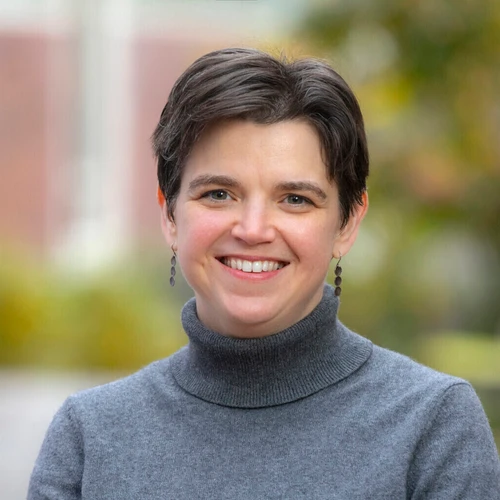Karen Lange

Bio: Karen Lange is the Theresa Mall Mullarkey Associate Professor of Mathematics at Wellesley College. In her research, she studies the “balance scales” used to calibrate computational information and applies these tools to measure the difficulty of algebraic problems. She’s also passionate about community-building and inclusion in mathematics, and she teaches a seminar on writing about mathematics for the public. She earned her undergraduate degree at Swarthmore College and her doctoral degree at the University of Chicago, and she completed an NSF Postdoctoral Fellowship at the University of Notre Dame.
Additional information can be found here.
Topics Include:
Different Problems, Common Threads: Computing the difficulty of mathematical problems
Mathematics is filled with theorems that state the existence of a desired object. For example, a result known as Weak Kőnig’s Lemma (which I’ll introduce) states that “every binary tree with infinitely many nodes has an infinite path”. But just because we know an object exists, doesn’t mean we can find it. Given Weak Kőnig’s Lemma, it’s natural to ask whether we can compute a path through a given binary tree with infinitely many nodes. It turns out the answer to this “Path Problem” is “no”, so we say that the problem is not “computable”. But then just what exactly is the computational power of this Path Problem?
Using this Path Problem as a test case, we will explore the key ideas behind taking a “computable” perspective on mathematics (over an “existence” one) and describe an approach for measuring the computational power of mathematical problems. We’ll see that the computational power of problems varies widely and studying problems’ power helps to illuminate what really makes problems “tick”.
Classification via lists in computable structure theory
“Classifying” a natural class of structures is a common goal in mathematics. Providing a classification can mean different things, e.g., determining a set of invariants that settle the isomorphism problem or instead creating a list of all structures of a given kind without repetition of isomorphism type. Here we’ll discuss classifications of computable structures of the latter kind and provide a self-contained introduction to computable structure theory along the way. We’ll consider natural classes of computable structures such as vector spaces, equivalence relations, algebraic fields, and trees to better understand the nuances of classification via effective lists and its relationship to other forms of effective classification.